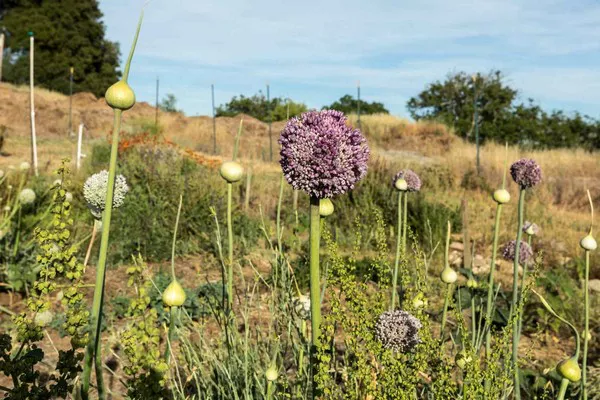Flowers are not only a delight to the senses, but they also bring life and color to our gardens and landscapes. To ensure the longevity and vitality of our floral displays, it is essential to provide proper care and maintenance. One important practice that can significantly benefit flowering plants is deadheading. Deadheading refers to the removal of spent or faded flowers from plants, a simple yet powerful technique that encourages new growth, prolongs the blooming period, and enhances the overall appearance of the plant. While deadheading is beneficial for many flowers, certain species specifically thrive with this practice. In this article, we will explore the flowers that benefit from deadheading and discuss the key considerations and techniques for effective deadheading.
The Advantages of Deadheading
Deadheading offers several advantages to both the plants and gardeners. By removing spent flowers, the plant is encouraged to redirect its energy toward producing new blooms. This process, known as “rejuvenation,” stimulates the growth of additional flower buds, resulting in a more abundant and extended blooming period. Moreover, regular deadheading prevents the formation of seed heads, which can drain resources from the plant and inhibit further flowering. Additionally, removing faded flowers improves the overall aesthetics of the plant and the garden as a whole, enhancing the visual appeal and ensuring a neat and tidy appearance.
Flowers That Benefit from Deadheading
Roses: Roses are perhaps the most well-known flowers that greatly benefit from deadheading. By removing faded blooms, roses are encouraged to produce new flower buds. Deadheading also prevents the formation of rose hips, allowing the plant to focus its energy on blooming rather than seed production. Hybrid tea roses, floribundas, and grandifloras are particularly responsive to deadheading.
Marigolds: Marigolds are vibrant annual flowers that thrive when deadheaded regularly. Removing faded flowers not only promotes the growth of new blooms but also prevents self-seeding, ensuring the plant’s energy is directed toward producing more flowers rather than setting seeds. Deadheading marigolds encourages a fuller and more vigorous plant.
Petunias: Petunias are renowned for their abundant and colorful blooms, which can be prolonged through regular deadheading. By removing spent flowers, petunias are encouraged to produce new buds, resulting in a continuous display of vibrant blossoms. Deadheading also prevents the formation of seed pods, redirecting the plant’s resources towards blooming and growth.
Geraniums: Geraniums are popular flowering plants appreciated for their vibrant hues and long-lasting blooms. Deadheading geraniums not only improves their appearance but also stimulates the production of new flower buds. By removing faded blooms, gardeners can ensure a more consistent and prolonged flowering season.
Dahlias: With their striking and diverse blooms, dahlias are favorites among gardeners. Deadheading dahlias is crucial to maintaining their splendor. Regular removal of spent flowers promotes the growth of new blooms and prevents the formation of seed heads. Deadheading also encourages the tuberous roots to store more energy, leading to healthier and more vigorous plants.
Salvias: Salvias, with their showy spikes of vibrant flowers, greatly benefit from deadheading. By removing faded flowers, salvias continue to produce new blossoms throughout the season. Deadheading salvias also prevents self-seeding and encourages a fuller and more compact plant growth.
Techniques for Effective Deadheading
When deadheading flowers, it is important to employ proper techniques to ensure optimal results and minimize any potential damage to the plant. Here are some key considerations to keep in mind:
Timing: Deadheading should be performed regularly throughout the flowering season. It is best to remove spent flowers promptly to encourage the development of new buds and maintain a continuous blooming display. Depending on the plant species, deadheading can be done weekly or whenever faded flowers are observed.
Tools: The primary tool required for deadheading is a pair of sharp and clean pruning shears or scissors. It is essential to use sharp tools to make clean cuts, minimizing any stress or damage to the plant. Clean the tools with rubbing alcohol before use to prevent the spread of diseases.
Method: When deadheading, locate the base of the flower stem, just above a healthy leaf node or set of leaves. Make a clean and slanted cut, approximately ¼ inch above the node. This technique allows for optimal healing and minimizes the visibility of the cut stem.
Disposal: Proper disposal of the removed flowers is essential to prevent the spread of pests or diseases. Collect the faded blooms in a container or garden bag, and dispose of them in the appropriate manner, such as adding them to a compost pile.
Post-Deadheading Care: After completing the deadheading process, it is beneficial to provide the plants with a light application of fertilizer or a dose of organic matter, such as compost or well-rotted manure. This provides the necessary nutrients for continued growth and flowering.
Conclusion
Deadheading is a simple yet effective technique that can significantly enhance the beauty and vitality of flowering plants. By removing spent flowers, gardeners encourage new growth, prolong the blooming period, and improve the overall appearance of the garden. Roses, marigolds, petunias, geraniums, dahlias, and salvias are just a few examples of flowers that greatly benefit from deadheading. By following the proper techniques and timing, gardeners can harness the power of deadheading to create stunning floral displays and enjoy a continuous burst of color throughout the growing season. So, grab your pruners and indulge in the art of deadheading to maximize the potential of your flowers and create a vibrant and thriving garden.


